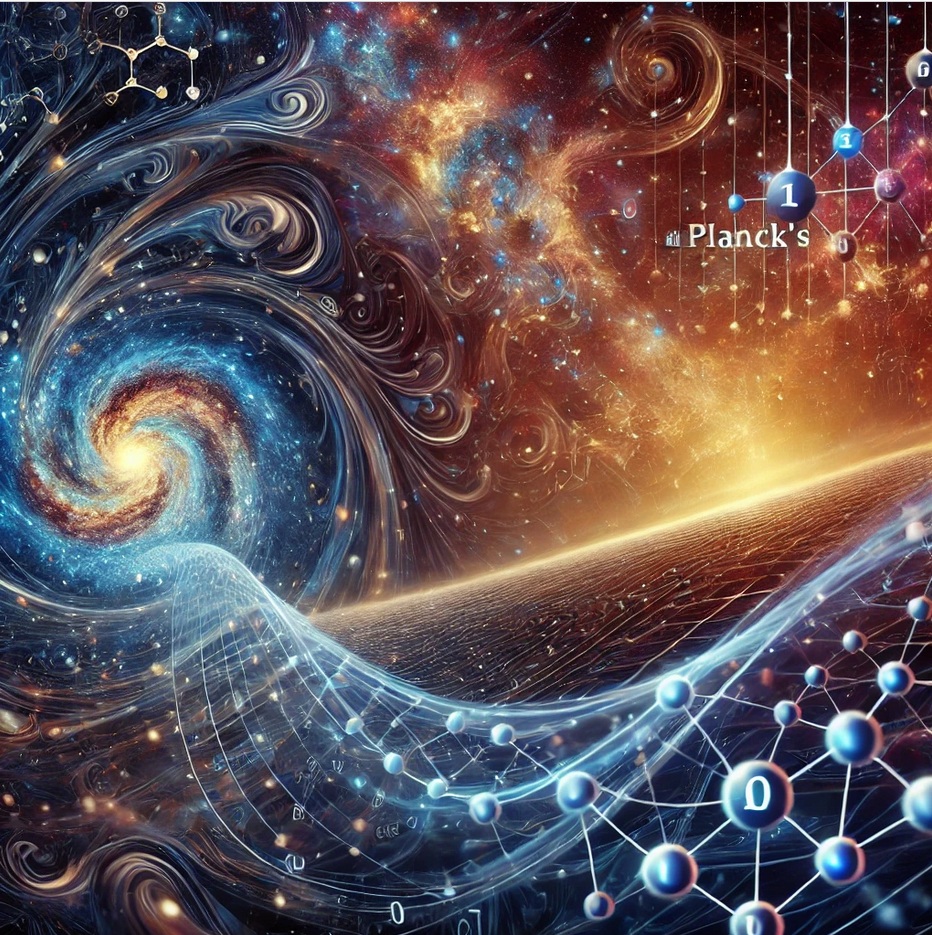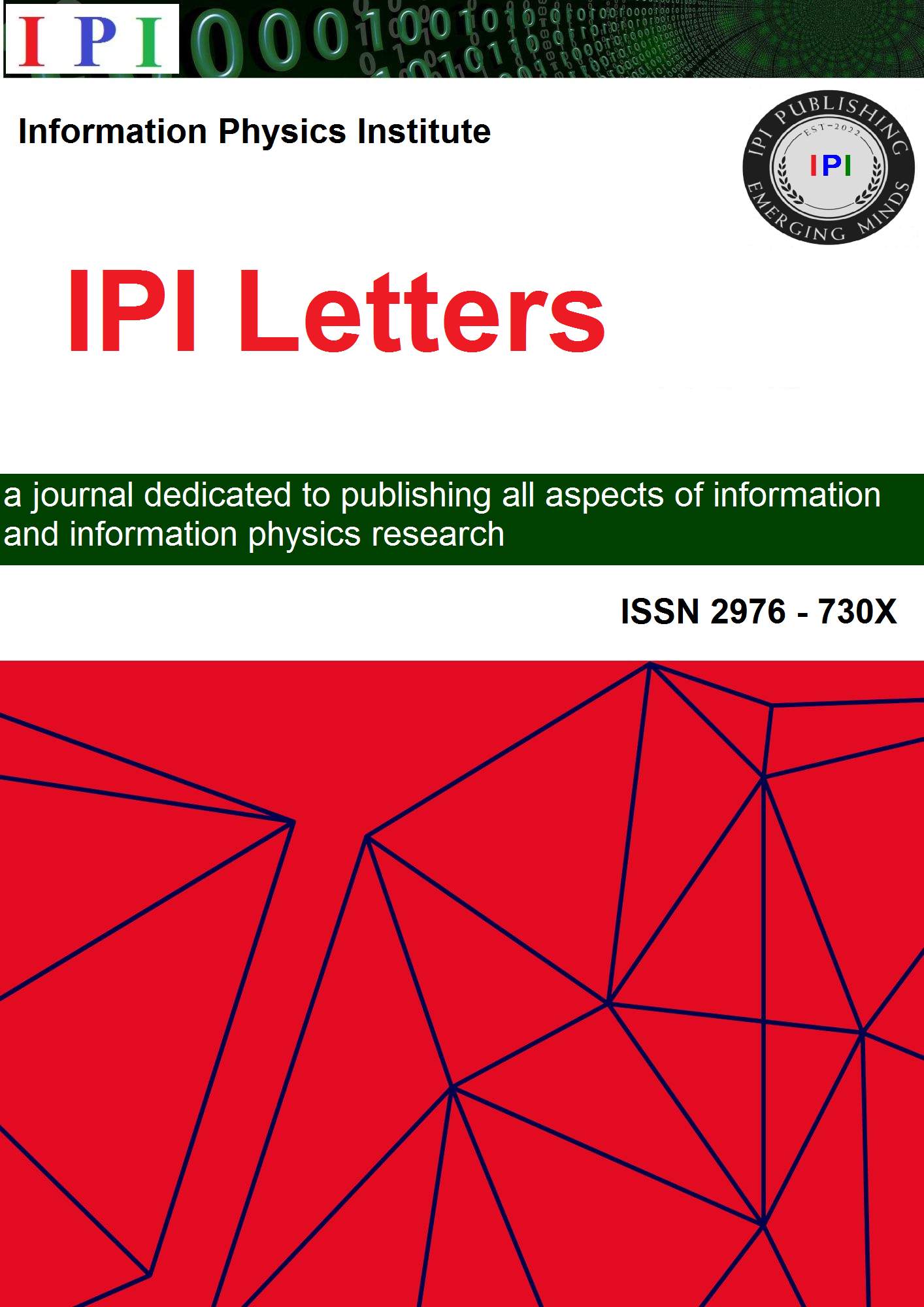Space and Time at Planck's Scale, Carriers of Evolutionary Information, and the Evolution of the Universe
Unified Model of Natural Evolution-02
DOI:
https://doi.org/10.59973/ipil.164Keywords:
Evolution of the Universe; Cosmological inflation; Origin of life ; Entropy of black hole; Planck's mass ; Planck's time ; Planck's lengthAbstract
The purpose of this paper is to present a detailed description of the Planckian stage of the unified model of natural evolution (UMNE) and the transition from the Einsteinian stage to the Darwinian stage. The model consists of four stages: Planckian, Einsteinian, Darwinian, and Intellectual. Planck’s universe is described as a collection of entangled entities called PlanckITs. PlanckITs code the simplest form of existence in space and time. In Planck’s universe, existence means entanglement, and entanglement means existence. There are no other physical processes except existence and entanglement. Each event of existence is described in terms of the randomized intervals of separation and duration. The space-time continuum is described
as an emergent phenomenon of PlanckITs into an addressable continuum of PlanckYTEs. The definitions of Planck’s unit of length, time, and mass are derived from two conditions: the condition for the existence of the randomized spatial and the randomized temporal intervals; the condition for the existence of the space-time continuum. A number called Planck’s number is introduced to describe the processes in the Planckian universe. Planck’s number N0 represents the number of PlanckITs in a PlanckYTE. Several expressions are presented that support the hypothesis that the latest generation of the leptons and the quarks carry the information for the evolution of the universe. These expressions give the local and the galactic parameters of the solar systems that support life, the total mass and size of the universe, the critical density, and the Hubble’s constant. The beginning moment, the ending moment, and the expansion factor of the initial cosmological expansion are also calculated. A range for the value of the mass of black hole is also derived. This article is a supplementary
paper to the research papers: ”A Unified Model of Natural Evolution and the Crises in Particle Physics and Cosmology”; ”Evolutionary Anthropodynamics: The Evolution of Intellectual Systems” [1,2].
References
Chowdhury, P. (2025). A Unified Model of Natural Evolution and the Crises in Particle Physics and Cosmology: Unified Model of Natural Evolution-01. IPI Letters, 3(1), O1-O28. https://doi.org/10.59973/ipil.156 DOI: https://doi.org/10.59973/ipil.156
Chowdhury, P.K. ”Evolutionary Anthropodynamics : The Evolution of Intellectual Systems” , 2021 (soon to be published)
Stanford Encyclopedia of Philosophy. https://plato.stanford.edu/entries/reduction-biology/
Stanford Encyclopedia of Philosophy. https://plato.stanford.edu/entries/scientific-reduction/
Uzan, Juan-Philippe(2011). ”Varying Constants, Gravitation, and Cosmology”, Pub-Med Central, Mar 29, 2011 https://www.ncbi.nlm.nih.gov/pmc/articles/PMC5256069/
Stephan, Jean-Marie;et al.(2009).”Shanon and entanglement entropies of one- and two- dimensional critical wave functions” arXiv, Oct 22, 2009 https://arxiv.org/pdf/0906.1153
Principle of Maximum Entropy https://en.wikipedia.org/wiki/Principle_of_maximum_entropy
Nambu, Yochiro (1976). ”The Confinements of Quarks.” 12020976, Scientific American Inc. http://physics.gmu.edu/˜rubinp/ DOI: https://doi.org/10.1038/scientificamerican1176-48
courses/440-540/undergrad/QuarkConfinement.pdf
Chowdhury ,Pronab Kenti(1989). ”The Evolution of the Universe and Fundamental Constants ” Mar 1989 ,Report Number:Print:89-0327 https://inspirehep.net
Romeo Jessico (2020),”How Do Neutrinos Get Their Mass?, Symmetry, June 09, 2020,https://www.symmetrymagazine.org/article/how-do-neutrinos-get-their-mass
Physical Constants, https://physics.nist.gov/constants
Monohar, A.V.;et. al.(2016). ”Quark Masses”,https://pdg.lbl.gov/2017/reviews/rpp2017-rev-quark-masses.pdf
Woo, Marcus (2019). ”How the Neutrino’s Tiny Mass Could Solve Big Mysteries.” Quantamagazine, October 15, 2019
https://www.quantamagazine.org/how-the-neutrinos-tiny-mass-could-help-solve-1015big-mysteries-2019/
Ali, Ahmed (1998) ”Quark Mixing and CP violation” ,arXiv,June2,1998 https://arxiv.org/pdf/hep-ph/9806230 DOI: https://doi.org/10.1201/9781420050332.ch10
Kajita, Takaaki(2010).” Atmospheric Neutrino and Neutrino Oscillation. PubMed Central,April,2010,
https://pmc.ncbi.nlm.nih.gov/articles/PMC3417797/
Whitwam, Ryan (2021) ,”The First Star Formed 200 to 300 Million Years After the Big Bang”, ExtremeTech, June26,2021
Observable Universe, https://en.wikipedia.org/wiki/Observable universe
Sloman, Leila(2019) , ”Hubble Tension Headache :Clashing Measurements Make the Universe Expansion a Lingering Mystery.” Scientific American July 29 ,2019 https://www.scientificamerican.com/article/hubble-tension-headache-clashing-measurements-make-the-universes-expansion-a-lingering-mystery/
Freedman, Wendy L (2017).”Cosmology at a Crossroad: Tension with Hubble Constant.” arXiv, June 08, 2017
https://arxiv.org/abs/1706.02739
ESA and Planck, https://sci.esa.int/web/planck/-/51557-planck-new-cosmic-recipe
Ong, Yen Ching(2020).”Spacetime Singularities and Cosmic Censorship Conjecture: A Review With Some Thougths”, arXiv, May 26, 2020. https://arxiv.org/pdf/2005.07032
Damour,Thibault (2004),” The Entropy of Black Holes: A Primer”, Jan 22, 2004, pp.12-13 https://arxiv.org/pdf/hep-th/0401160.
Wall, Mike (2021). ”A giant black hole keeps evading detection and scientists can’t explain it.” Space, January 01, 2021,
https://www.space.com/abell-2261-supermassive-black-hole-missing
Carr, Bernard ; et al.(2020). ”Constraints on Stupendously large Black Holes”, arXiv, Sep 09,2020,https://arxiv.org/abs/2008.08077

Downloads
Published
How to Cite
Issue
Section
License
Copyright (c) 2025 Pronab Chowdhury

This work is licensed under a Creative Commons Attribution 4.0 International License.














